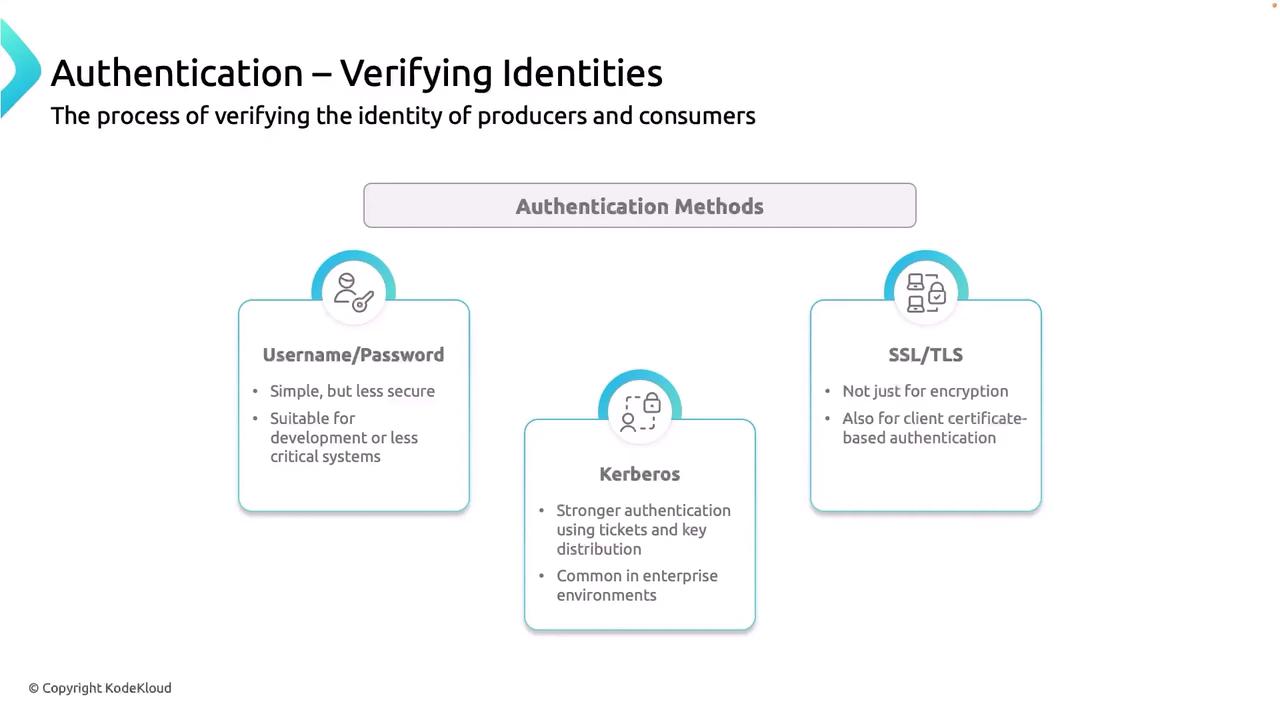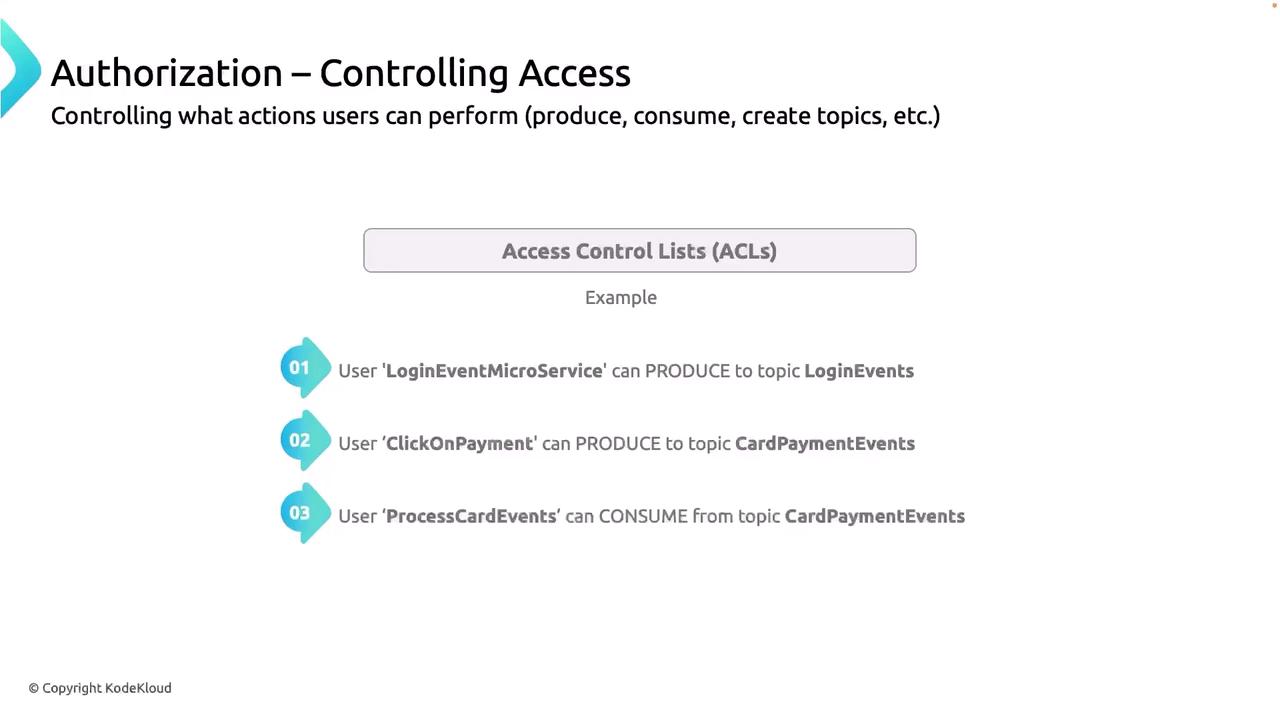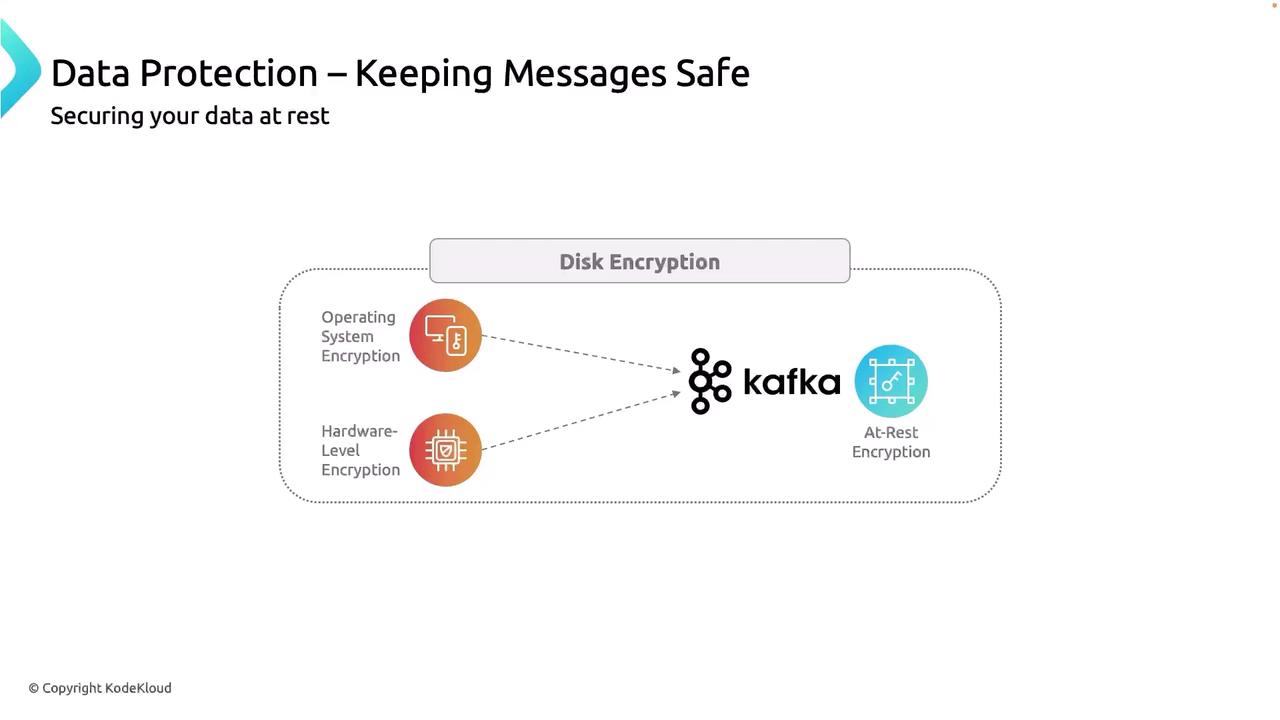Event Streaming with Kafka
Deep Dive into Kafka Beyond the Basics
Securing Kafka
In this guide, we’ll cover Kafka security best practices, including authentication, authorization, and data protection. By following these steps, you can harden your Kafka deployment for development, QA, and production environments.
1. Authentication Methods
Applications and microservices must prove their identity before accessing Kafka topics. Here are the three most common authentication mechanisms:
| Method | Pros | Cons | Recommended Use |
|---|---|---|---|
| Username/Password | Easy setup, minimal overhead | Credentials can be compromised | Development, QA |
| Kerberos | Strong, enterprise-grade security | Complex KDC installation & upkeep | Large organizations with dedicated security teams |
| SSL/TLS | End-to-end encryption, certificate management | Moderate operational effort | Production |
Note
Use Username/Password for quick testing and non-sensitive workloads. For production, prefer SSL/TLS unless you have experts managing a Kerberos KDC.

2. Authorization with Access Control Lists (ACLs)
After verifying identity, enforce fine-grained permissions by defining Kafka ACLs. ACLs control which principals can perform READ, WRITE, or DESCRIBE operations on resources such as topics and consumer groups.
Example ACL definitions:
# Allow the login-event service to produce to login-events
kafka-acls --authorizer-properties zookeeper.connect=zk:2181 \
--add --allow-principal User:login-event \
--operation WRITE --topic login-events
# Allow the card-payment service to produce to card-payment-events
kafka-acls --authorizer-properties zookeeper.connect=zk:2181 \
--add --allow-principal User:click-payment \
--operation WRITE --topic card-payment-events
# Grant process-card-events consumer read access to payment-events
kafka-acls --authorizer-properties zookeeper.connect=zk:2181 \
--add --allow-principal User:process-card-events \
--operation READ --topic payment-events
Note
Restricting each service to only its allotted topics reduces the impact of compromised credentials.

3. Data Protection (Encryption at Rest)
Kafka retains messages on disk, so encrypting “data at rest” is essential. Depending on your environment, you can choose:
| Encryption Layer | Tools / Services | Use Case |
|---|---|---|
| Operating System-Level | LUKS (Linux), BitLocker (Windows) | On-prem servers |
| Hardware-Level (Self-Encrypting Drives) | SED-A, Intel® QLC SSDs | Dedicated appliances |
| Cloud-Provider Disk Encryption | AWS EBS, Azure Disk Encryption | Public cloud deployments |
Note
For AWS-based Kafka brokers, attach encrypted EBS volumes and enable AWS Key Management Service (KMS) for key rotation.

4. End-to-End Security Posture
A robust Kafka security architecture integrates all layers:
- Authentication – Use SSL/TLS or Kerberos (or Username/Password in non-prod).
- Authorization – Apply ACLs to limit topic and group access.
- Encryption (at rest) – Enable disk encryption via OS, hardware, or cloud provider.
Warning
Do not skip ACL enforcement or disk encryption in production—failure to secure any layer can expose sensitive data.

Links and References
Watch Video
Watch video content